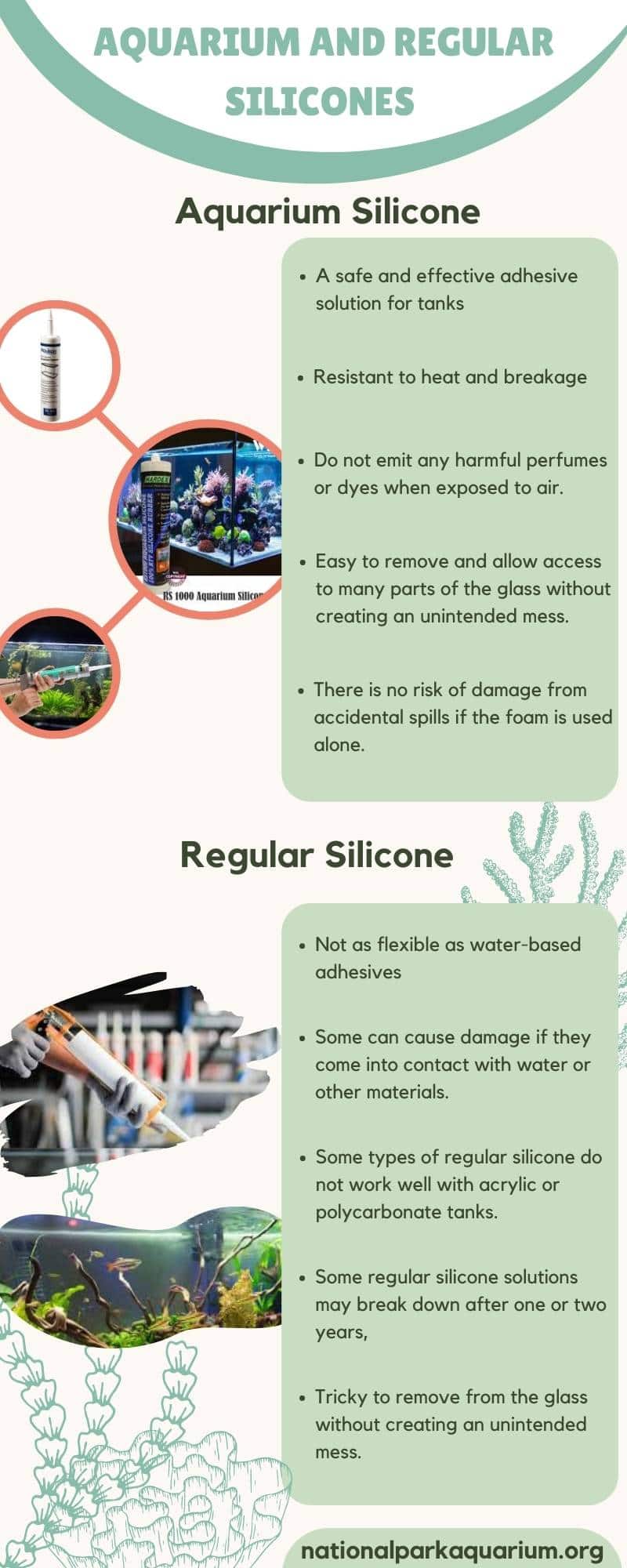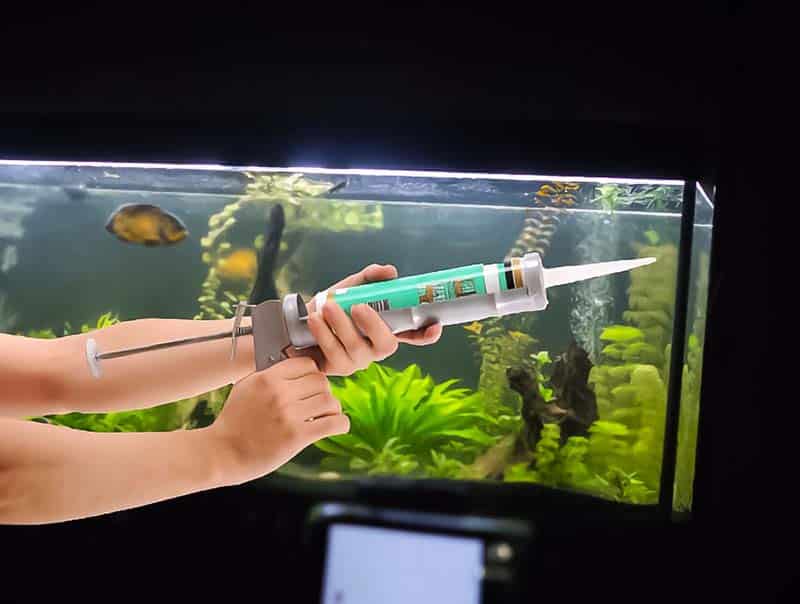When it comes to aquariums, there are a few things that you don’t want to cut corners on, especially ones that affect the safety of your fish. One of those is the sealant you use to create your tank’s lid and seams.
Silicone is a common material for security, as it is inexpensive and waterproof; however, not all silicone can be used for aquarium life.
So, what’s the difference between aquarium silicone and regular silicone? Which should you be using for your tank? Keep reading for all the answers.
What is Aquarium safe silicone?
Aquarium silicone is a type of silicone specifically formulated for use in aquariums.
Formula: Aquarium silicone is made from a variety of different materials, but the most common type is silicon dioxide (SiO2). This material is found in sand, glass, and many types of rocks.
Silicon dioxide is very resistant to heat, water, and chemicals, making it an ideal choice in aquariums.
Features: It is made to be safe for fish and other aquatic creatures. Such a product can resist water and salt degradation. Aquarium silicone is also available in various colors, though clear silicone is the most popular choice.
Aquarium silicone is also clear, which allows light to pass through it. This feature makes it ideal for creating aquarium backgrounds or using in place of glass in some aquarium designs.
Uses: Aquarium silicone has many uses, including sealing aquariums, holding decorations in place, and creating custom shapes and designs. It is also frequently used to repair leaks in aquariums.
Aquarium silicone is available in both liquid and gel form.
- Liquid aquarium silicone is easy to apply and can be used for a variety of purposes.
- Gel aquarium silicone is thicker than liquid silicone and is better suited for creating custom shapes and designs.
Aquarium silicone is typically sold in tubes or bottles, and it can be found at most pet stores or online retailers.
Aquarium silicone vs Regular silicone Comparison

Aquarium silicone is the best choice for use in an aquarium environment. If you use regular silicone in your aquarium, be sure to clean it regularly.
- Aquarium silicone is more flexible than regular silicone, making it less likely to crack or break under the weight of water or rocks.
- It is also more resistant to algae and bacteria growth, making it safer for use in an aquarium environment.
- Regular silicone can be used in an aquarium environment, but it is not as well suited for the task as aquarium silicone. Regular silicone is more likely to crack or break under the weight of water or rocks, and it is also more susceptible to algae and bacteria growth.
- Aquarium silicone is more expensive than regular silicone, but its superior performance is worth the investment. A
- Aquarium silicone is typically clear, while regular silicone may be opaque. Regular silicone can also discolor the water.
How Does Aquarium-Safe Silicone Work?
Silicone is a water-resistant adhesive made of silicon and oxygen that can bond to most surfaces, including glass. This clear and flexible material is highly resistant to changes in pressure and other environmental conditions, such as weather, sunlight, and temperature. Silicone is applied as a liquid gel but gradually cures into a secure, tacky putty.
For smaller tanks, it typically takes 24 hours for the silicone to cure. For larger tanks, it’s best to allow as much time as possible for curing to ensure that there are no unfinished areas. The curing process should be carried out in an environment free of water and with exposure to oxygen. It’s best to perform a watertight test after curing to ensure that no areas of the tank are lacking silicone.

Best Popular Aquarium Silicone
When it comes to choosing the best aquarium silicone, one name that frequently pops up is the Aqueon Silicone Sealant.

This aquarium silicone is a high-strength, 100% silicone sealant designed for use in both fresh and saltwater aquariums. It is non-toxic, making it safe for fish and other aquatic animals. Moreover, it forms a strong waterproof seal that is easy to apply, non-shrinking, and long-lasting.
- The Aqueon Silicone Sealant comes in clear and black varieties and is widely available at most pet stores and online.
- Other popular aquarium silicone brands include Marineland’s Silicone Squeeze Tube and DAP 100% Silicone Aquarium Sealant.
Both of these products offer similar features to the Aqueon Silicone Sealant and have received positive reviews from aquarium enthusiasts.
Conclusion
The winner is aquarium silicone. This type of silicone is specially formulated to be safe for fish and other aquatic creatures, making it the perfect choice for your aquarium projects.
Now that you know the difference between aquarium silicone vs regular silicone, you can make the best decision for your next project. Have you ever used aquarium silicone before? What was your experience like?
See more:




